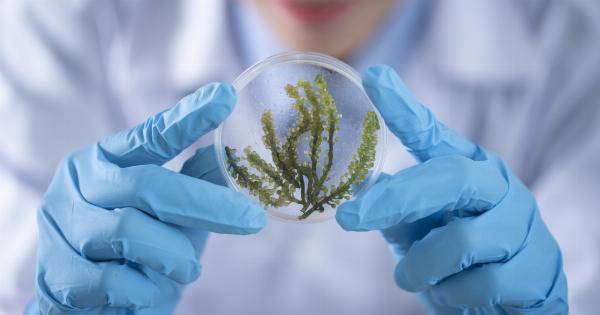Female intimacy is a topic that encompasses a variety of aspects, including sexual health, reproductive well-being, and overall intimate comfort. One aspect of female intimacy that is often overlooked or misunderstood is the role of the vaginal flora.
In this article, we will delve into the importance of understanding vaginal flora and its impact on female health and pleasure.
What is Vaginal Flora?
Vaginal flora refers to the complex ecosystem of microorganisms that inhabit the vagina. These microorganisms, including bacteria, yeast, and viruses, coexist in a delicate balance to maintain a healthy vaginal environment.
The most dominant bacteria in the vaginal flora are lactobacilli, specifically Lactobacillus crispatus, Lactobacillus gasseri, Lactobacillus jensenii, and Lactobacillus iners. These bacteria help create an environment that is acidic, slightly damp, and free from harmful pathogens.
The Importance of Vaginal Flora
Vaginal flora plays a crucial role in various aspects of female health:.
1. Protection against Infections
The dominant lactobacilli in the vaginal flora produce lactic acid, which helps maintain the vagina’s pH at a slightly acidic level (around 3.5-4.5).
This acidic environment, along with other substances produced by lactobacilli, discourages the growth of pathogenic bacteria and yeast, reducing the risk of common vaginal infections such as bacterial vaginosis and yeast infections.
2. Maintenance of Vaginal Moisture and Lubrication
Vaginal moisture and lubrication are essential for comfortable and pleasurable intimacy. The presence of healthy vaginal flora ensures the production of glycogen, a complex sugar that is broken down by lactobacilli into lactic acid.
This process not only helps maintain the vagina’s acidic environment but also contributes to the production of substances that provide moisture and lubrication.
3. Support for Fertility and Reproduction
Vaginal flora is involved in the fertility and reproductive processes. The acidic environment created by lactobacilli supports the survival of sperm and helps facilitate their journey through the reproductive tract.
Additionally, the presence of healthy vaginal flora reduces the risk of complications during pregnancy, such as preterm labor or low birth weight.
Factors Affecting Vaginal Flora
Various factors can disrupt the delicate balance of vaginal flora:.
1. Antibiotic Use
Antibiotics are designed to kill harmful bacteria; however, they can also eliminate the beneficial lactobacilli in the vagina. This disruption can lead to an overgrowth of other bacteria or yeast, increasing the risk of infections.
2. Hormonal Changes
Changes in hormone levels, such as those that occur during the menstrual cycle, pregnancy, or menopause, can affect the vaginal pH and the composition of vaginal flora. These changes can make women more susceptible to infections or imbalances.
3. Personal Hygiene Products
The use of certain soaps, douches, or scented products in the genital area can disrupt the natural balance of vaginal flora. These products may contain harsh chemicals or fragrances that can irritate the delicate tissues and alter the vaginal pH.
4. Sexual Activity
Sexual activity, especially with a new partner or multiple partners, can introduce new bacteria or disrupt the vaginal flora.
It is important to maintain good sexual hygiene and consider using protection methods to reduce the risk of introducing harmful microorganisms.
Maintaining a Healthy Vaginal Flora
To support the health of vaginal flora and overall intimate well-being, the following practices can be beneficial:.
1. Avoid Unnecessary Antibiotic Use
If prescribed antibiotics, it is important to complete the full course as directed by your healthcare provider. However, it is advisable to only use antibiotics when necessary to minimize the disruption to vaginal flora.
2. Practice Good Hygiene
Avoid using harsh soaps or douches in the genital area. Opt for mild, fragrance-free cleansers when washing the external genitalia.
It is also important to wipe from front to back after using the toilet to prevent the transfer of bacteria from the anus to the vagina.
3. Choose Vaginal Health-Friendly Products
When it comes to personal hygiene products, select those that are specifically formulated for the delicate vaginal area. Look for products that are hypoallergenic, fragrance-free, and pH-balanced to maintain the natural environment of the vagina.
4. Practice Safe Sexual Behavior
Using barrier methods, such as condoms or dental dams, can help reduce the risk of sexually transmitted infections and maintain a healthy vaginal flora.
It is also important to communicate and prioritize sexual hygiene with partners to ensure mutual protection and well-being.
Conclusion
Understanding the role of vaginal flora is vital for every woman’s intimate health.
The delicate balance of microorganisms in the vagina plays a crucial role in protecting against infections, maintaining moisture and lubrication, and supporting fertility and reproduction. By taking proactive steps to maintain a healthy vaginal flora, women can promote their overall well-being and enhance their intimate experiences.






























